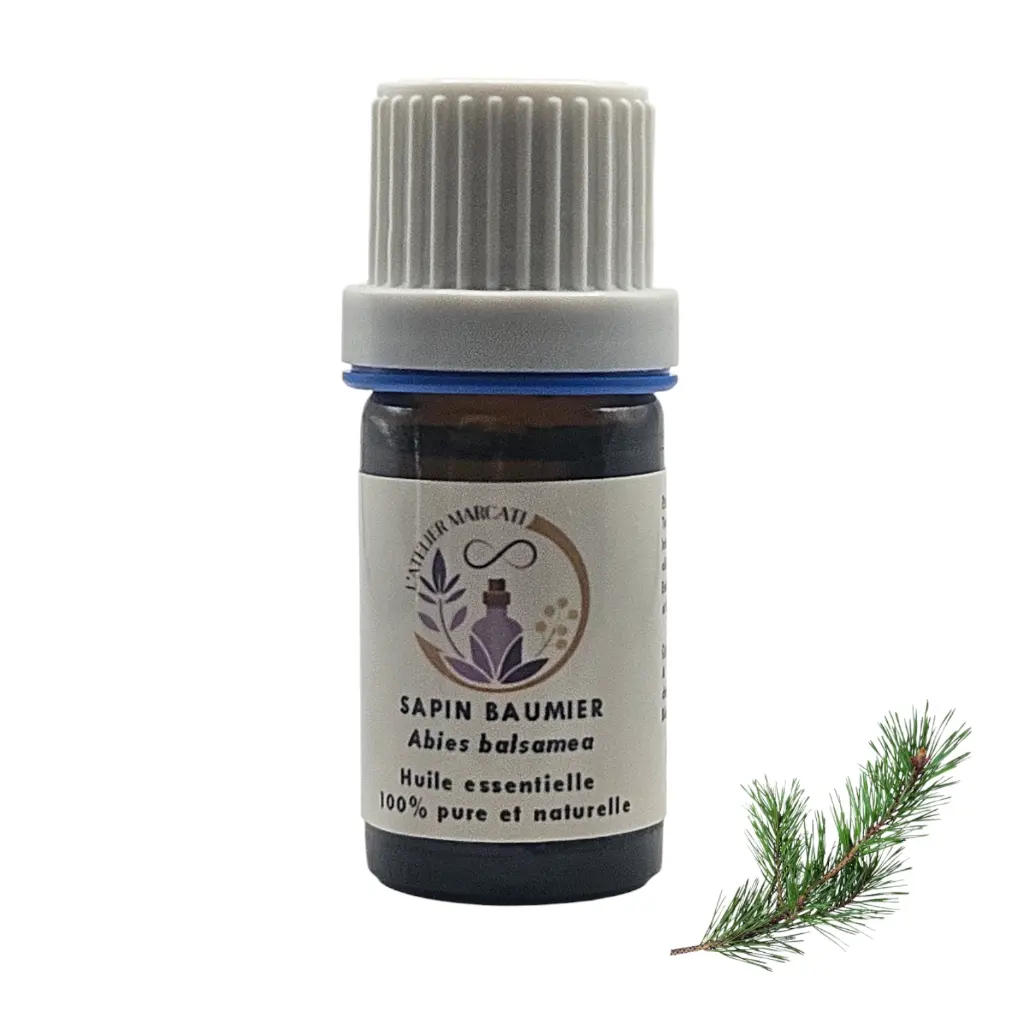Balsam fir essential oil
Botanical name: Abies balsamea

Chemotype and indications
Identity card
Name: Balsam Fir
Botanical name: Abies balsamea
Distilled part: Needle
Botanical family: Abuetaceae
Origin: Canada
Chemical composition:
- - Ketones (low %)
- - Esters (10 to 25%): Bornyl Acetate (9 to 23%)
- -Monoterpenes (75 to 90%): Alpha Pinene (5 to 10%), Beta Pinene (21 to 44%), Camphene (4 to 11%), Delta-3-Carene (7 to 35%), Limonene (3 to 20%)
Physical properties and therapeutic indications
- Aerophagia*
- Air antiseptic*
- Respiratory (tract) antiseptic*
- Antispasmodic
- osteoarthritis*
- Bronchitis*
- Catarrhe*
- Urinary tract disinfectant
- Parasiticide
- Cooling*
- Rhinitis*
- Bacterial sinusitis*
- Blood stimulant*
- Adrenal stimulant
Emotional, psychological properties and therapeutic indications
- Tranquilizer
- Lack of concentration (due to lack of breathing capacity)
- Depression
- Rooting
- Mental fatigue
- Psychic restorative
Additional information
Hazard: External use only; Neurotoxic
Legend: * powerful,** very powerful;*** extremely powerful (power value for the associated pathology)
Reference and bibliographic source: Lily BAYER and Dr Hervé STAUB, (2013) “In-depth treatise on Phyto and Aromatherapy”, Ed. Grancher. p. 642.
INDICATIONS IN AROMATHERAPY AND THE USE OF ESSENTIAL OILS DO NOT CONSTITUTE A MEDICAL DIAGNOSIS AND DO NOT REPLACE THE ADVICE OF A DOCTOR OR MEDICAL TREATMENT!
Balsam fir essential oil



